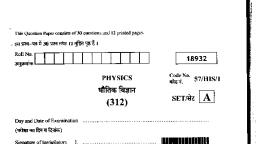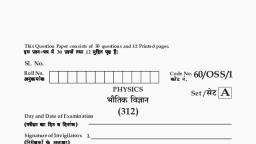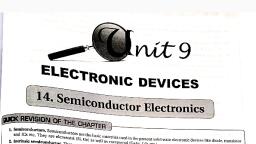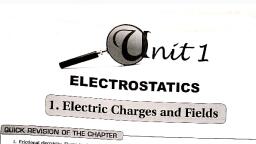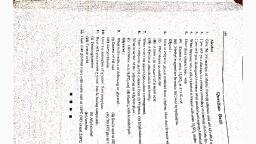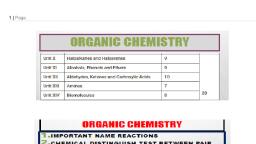Page 1 :
Q.11, , Empirical Formula
Page 2 :
Q.12 (a), , (i) The weak H−I bond requires less energy to dissociate., (ii) Low heat of dehydration due to little association in aqueous solution., (iii) Due to this, ΔH for the process HX(aq) H+(aq)+X−(aq) is maximum for HI., , →, , Q.12 (b), The intermolecular forces in oxygen are weak van der Waals forces, which causes, it to exist as gas. On the other hand, sulphur does not form strong S=S double, bonds hence exists as a puckered structure held together by strong covalent, bonds and exists as a polyatomic molecule. So, it exists as a solid.
Page 3 :
Puckered Structure
Page 5 :
Q.14 (a), , Lyophilic colloids are the colloidal solution in which the dispersed phase or the, particles have a very strong affinity with the liquid. The solution of this colloid is, known as lyophilic sol. These can be easily prepared by direct mixing or heating., The lyophilic sols are reversible in nature.
Page 6 :
Q.14 (a), , Lyophobic colloids are the colloidal solution in which the dispersed, phase has very little affinity for the dispersion medium. The solution of, this colloid is known as lyophobic sol and cannot be directly prepared., They are prepared by special methods. The lyophobic sols are, irreversible in nature.
Page 7 :
Q.15, , The molar volume, symbol Vm is the volume occupied by one mole of a, substance at a given temperature and pressure. It is equal to the molar mass, (M) divided by the mass density (ρ)., The ideal gas equation relating pressure (P), volume (V), and absolute temperature (T) is given as:, PV = nRT, Where,, R is the universal gas constant =8.314Jmol−1K−1, n = Number of moles = 1, T = Standard temperature = 273 K, P = Standard pressure = 1 atm =1.013×105Nm−2, V=nRT/P, =1×8.314×273/(1.013×105), =0.0224m3, =22.4 litres, Hence, the molar volume of a gas at STP is 22.4 litres., , ∴
Page 8 :
Q.16, Chemical reactions are generally carried out at constant pressure (atmospheric pressure), so it has been found useful to define a new state function Enthalpy (H) as :, H=U+PV ( By definition ), ΔH=ΔU+Δ(PV), ΔH=ΔU+PΔV (at constant pressure) combining with first law., ΔH=qp, , The enthalpy change will be equal to internal energy change when the change, in volume of system (∆V) is 0 , i.e. , the process is Isochoric .
Page 9 :
Isobaric process in which the pressure (P) is kept constant (ΔP =0)., Isochoric process in which the volume (V) is kept constant (ΔV =0)., Isothermal process in which the temperature (T) is kept constant (ΔT =0)., Adiabatic process in which the heat transfer is zero (Q=0)., , Important Extra topic
Page 10 :
Q.17, , Silicon tetrachloride is prepared by the chlorination of various silicon, compounds such as ferrosilicon, silicon carbide, or mixtures of silicon dioxide, and carbon., , silicon tetrachloride therefore reacts violently with water, forming white solid, silicon dioxide and HCl gas.
Page 11 :
Q.18 (a), , Q.18 (b)
Page 12 :
Q.19, , Saponification is simply the process of making soaps. During saponification, ester, reacts with an inorganic base to produce alcohol and soap. Generally, it occurs when, triglycerides are reacted with potassium or sodium hydroxide (lye) to produce, glycerol and fatty acid salt, called 'soap'
Page 13 :
Q.19
Page 14 :
Q.20(a), , The enthalpy of neutralization is the change in enthalpy that occurs when one, equivalent of an acid and one equivalent of a base undergo a neutralization, reaction to form water and salt.
Page 15 :
Q.20(a), the enthalpy of neutralization of all strong acids and strong bases is always constant, i.e. −57.1kJ The explanation to this generalization can be provided on the basis of, Arrhenius theory of ionization. The strong acids and strong bases are almost, completely ionized in dilute aqueous solutions., The neutralization of strong acid and strong bases simply involves the combination of, H+ ion (from acid) and OH− ions ( from the base) to form water molecules. it has been, found experimentally that when 1 mole of water is formed by the neutralization of 1, mole of H+ ions and 1 mol of OH− in aqueous solution, 57.1kJ of energy is released.
Page 16 :
Q.20(b), , Therefore, HR(Heat of reaction) =∑Hf(products) −∑Hf(reactants), HR=−(3×286)−(−824), , ∵ (Hffor H2and Fe=0), HR=−858+824, , HR=−34kJ/mol
Page 18 :
Q.21(a)(ii), , On heating with the alcohol KOH solution and chloroform the aniline, will form methyl isocyanide which can be detected by its fouling, smell. - While N-methylaniline will not give this test., , Carbylamine test
Page 20 :
(ii) Secondary and tertiary amines :, Secondary amines give Libermann nitrosoamine test., On heating with nitrous acid (prepared in situ), they give yellow coloured, oily N-nitrosoamine., Tertiary amines do not give such test.
Page 21 :
(iii) Ethylamine and aniline :, , Azo dye test., , Aniline on diazotization ( ice cold nitrous acid solution) followed by coupling with, 2-naphthol (in alkaline solution) forms brilliant orange or red dye. Ethylamine, will not form dye. It will give brisk effervescence (due to liberation of nitrogen, gas) but solution remains clear.
Page 22 :
(iv) Aniline and benzylamine :, Azo dye test., Aniline on diazotization ( ice cold nitrous acid solution) followed by coupling, with 2-naphthol (in alkaline solution) forms brilliant orange or red dye., Benzylamine will not give such test.
Page 24 :
Q.21(b)(i)
Page 25 :
Q.21(b)(ii)
Page 26 :
Q.22(a), , 2-chloro-4-hydroxypentanoic acid, Q.22(b)
Page 27 :
Q.22(b)
Page 28 :
Q.23(a), , An ideal solution is the solution which obeys Raoult's law exactly over, entire range of concentration. Such solutions are formed by mixing the two, components which are identical in molecular size, in structure and have, almost identical intermolecualr forces., The characteristics of ideal solutions:, (1) It must obey Raoult's law., (2) The enthalpy of mixing should be zero., (3) The volume of mixing should be zero.
Page 29 :
Q.24(a), , The boundary surface diagram of s orbital is spherical, so it will be, spherical for 1s, 2s, 3s and 4s or for any general ns. The shape doesn't, depend on the principle quantum number (n).
Page 30 :
Q.24 (a)
Page 31 :
Q.24(b)
Page 32 :
Q.25 (a)
Page 33 :
Q.25 (b), , Order of Reaction
Page 34 :
Q.25 (c)
Page 35 :
Q.26
Page 36 :
Q.26, , Calcium ions (Ca2+) contribute to the physiology and, biochemistry of organisms' cells. They play an important, role in signal transduction pathways, where they act as a, second messenger, in neurotransmitter release from, neurons, in contraction of all muscle cell types, and in, fertilization.
Page 37 :
Q.27 (a) (i), , The 2-chlorobutane has the chloro group at the second carbon atom thus, there are two β positions. Thus, 2-chloro butane on reaction with alcohol KOH, gives 2-butene as the major product. This is because the double-bonded, carbons are linked to two methyl groups thus it is highly alkylated compared, to 1-butene.
Page 38 :
Q.27 (a) (i)
Page 39 :
Q.27 (a) (ii)
Page 40 :
Q.27 (a) (i), , The melting point of p-isomer is quite higher than ortho and meta isomers. This is, due to the fact that it has symmetrical structure and therefore its molecules can be, easily packed closely in crystal lattice.
Page 41 :
Q.27 (b) (ii), , Alcohols undergo extensive intermolecular H-bonding. Therefore, the, boiling points of alcohols are much higher than haloalkanes of, comparable molecular mass because the molecules of haloalkanes, are held together only by weak dipole-dipole and van der waals, forces of attraction.
Page 44 :
Q.29 (a)
Page 45 :
Q.29 (a)
Page 47 :
Q.30 (a), , Explain why NH3 and H2O Molecules distorted tetrahedral bond angle?
Page 48 :
Q.30 (b), , Why Concept of resonance needed?, Isomers have different arrangement of both atoms and electrons. Resonance, forms differ only in arrangement of electrons. Resonance structures are a, better depiction of a Lewis dot structure because they clearly show bonding in, molecules. The more resonance forms a molecule has makes the molecule more, stable.
Page 49 :
What is resonance hybrid ?, , Q.30 (b), , Resonance hybrid is a compound, molecule, ion, or radical exhibiting, resonance and having a structure represented in the written form as, the average of two or more structural formulas separated each from the, next by a double-headed arrow.
Page 50 :
How Canonical and Resonance Structure differ., , Q.30 (b)
Page 51 :
Examples, , Q.30 (b)
Page 53 :
Canonical Structure of N2O, , Q.30 (b)










